Home>Articles>What Does A Partially Finished Basement Look Like
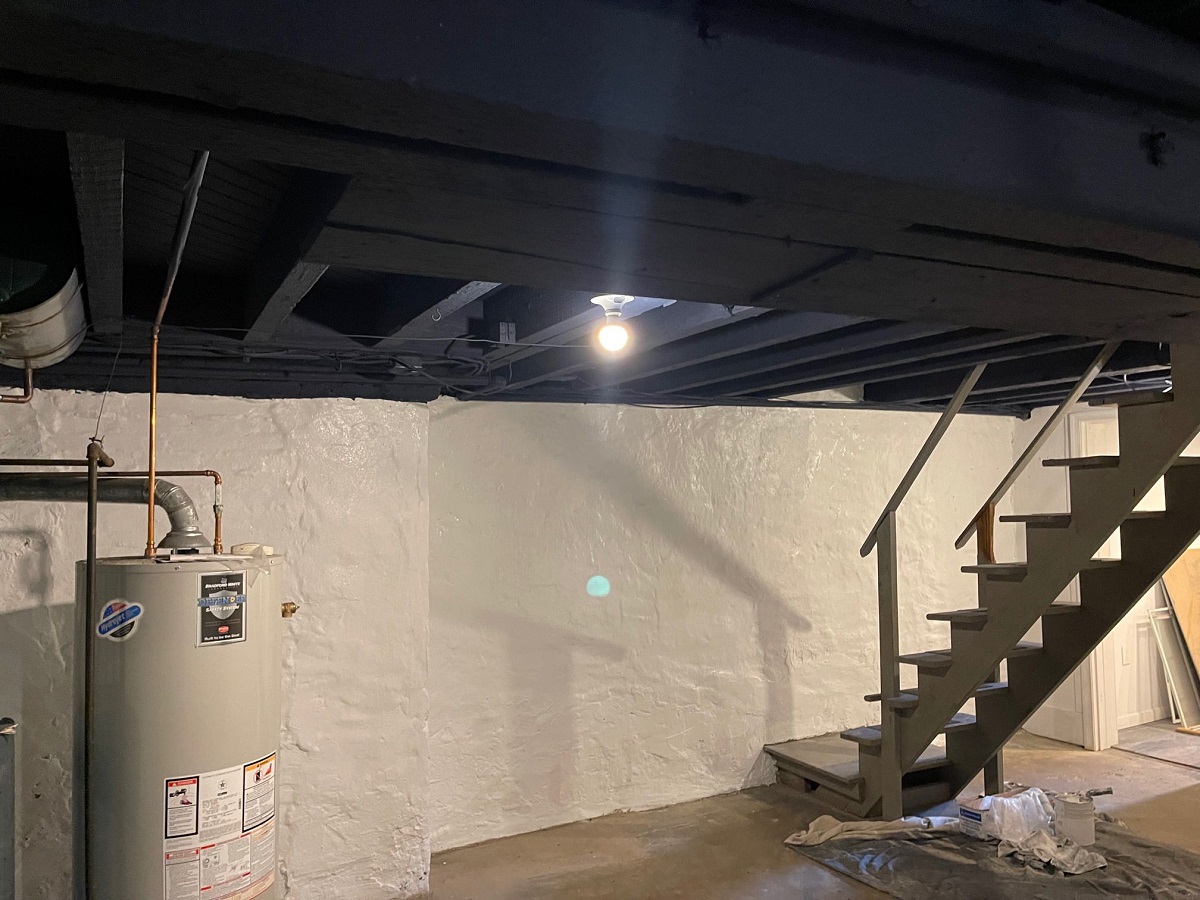

Articles
What Does A Partially Finished Basement Look Like
Modified: May 6, 2024
Discover what a partially finished basement looks like with our informative articles. Learn how to turn your basement into a functional and stylish space.
(Many of the links in this article redirect to a specific reviewed product. Your purchase of these products through affiliate links helps to generate commission for Storables.com, at no extra cost. Learn more)
Introduction
When it comes to maximizing the space in your home, a partially finished basement can be a game-changer. This versatile area offers a multitude of benefits, from providing extra living space to increasing the value of your property. Whether you’re looking to create a cozy family room, a home office, a workout space, or a combination of these, a partially finished basement can provide the perfect canvas to bring your vision to life.
But what exactly does a partially finished basement look like? Well, the beauty of it is that it can be customized to suit your specific needs and preferences. Some homeowners opt for a more rustic and casual feel, while others prefer a sleek and modern design. It’s all about personalizing the space to reflect your unique style and lifestyle.
In this article, we will explore the benefits of having a partially finished basement, factors to consider before embarking on the project, and various design elements you can incorporate to make the most of this versatile space. Whether you’re a DIY enthusiast or plan to hire professionals, this article will provide you with the inspiration and guidance you need to create a stunning and functional partially finished basement.
Key Takeaways:
- Transform your partially finished basement into a versatile and personalized space by carefully considering factors such as budget, permits, moisture control, and structural integrity. Incorporate common features, suitable flooring, and thoughtful design choices to maximize enjoyment and functionality.
- When planning a partially finished basement project, consider cost factors such as size, complexity, materials, labor, and installations. Allocate a contingency budget, seek professional guidance, and weigh long-term savings and return on investment to ensure a successful and valuable home improvement endeavor.
Read more: What Does Mold In Basement Look Like
Benefits of a Partially Finished Basement
A partially finished basement offers homeowners a wide range of benefits and advantages. Let’s take a closer look at some of the key reasons why you should consider investing in this home improvement project.
- Increased living space: One of the most obvious benefits of a partially finished basement is the extra living space it provides. Whether you have a growing family, need a dedicated home office, or want to create a recreational area, a partially finished basement offers endless possibilities for expanding and enhancing your living arrangements.
- Added value to your property: By finishing a portion of your basement, you’re effectively increasing the overall square footage of your home. This can significantly boost the value of your property, giving you a return on investment should you ever decide to sell in the future.
- Improved functionality: A partially finished basement can serve a multitude of purposes. It can be transformed into a home gym, a playroom for the kids, a guest suite, or even a home theater. The versatility of the space allows you to tailor it to suit your specific needs and lifestyle.
- Enhanced privacy: If you have a bustling household, a partially finished basement can provide a quiet retreat away from the main living areas. Whether it’s a secluded home office or a cozy bedroom for guests, the basement offers a level of privacy that can be invaluable for both relaxation and productivity.
- Energy efficiency: The cool temperature of a basement can help regulate the overall temperature of your home. By improving the insulation and energy efficiency of your partially finished basement, you can reduce heating and cooling costs throughout the year.
- Flexibility for future renovations: A partially finished basement provides a great foundation for future renovations and upgrades. You can start with the essentials and gradually expand and enhance the space as your needs and budget allow.
- Reduced clutter: If you find yourself struggling with storage space, a partially finished basement can be the solution. By incorporating clever storage solutions, you can keep your belongings organized and out of sight, freeing up space in the main living areas of your home.
As you can see, a partially finished basement has numerous advantages that can improve both your living experience and the value of your home. It’s a worthwhile investment that offers versatility, functionality, and endless possibilities for customization.
Factors to Consider Before Partially Finishing a Basement
Before diving into a partially finished basement project, there are several important factors to consider. Taking the time to thoroughly evaluate these factors will ensure that you make informed decisions and create a space that meets your needs and expectations. Here are some key considerations to keep in mind:
- Budget: Determine your budget for the project and allocate funds accordingly. This will guide your decisions on the extent of the renovation, materials to use, and any professional help you may need.
- Permits and regulations: Check local building codes and regulations to determine if you need permits for your basement renovation. It’s important to comply with all legal requirements to ensure the safety and legality of your project.
- Moisture and waterproofing: Basements are prone to moisture issues, so it’s vital to assess the moisture levels and waterproof the space before finishing it. This may include installing drainage systems, sealing cracks, and applying waterproof coatings.
- Structural integrity: Have a professional assess the structural integrity of your basement. Any existing issues, such as cracks in the walls or sagging beams, should be addressed before starting the renovation to prevent future problems.
- Utilities and systems: Consider the location of electrical panels, HVAC systems, and plumbing in your basement. Ensure easy access to these utilities and plan your layout accordingly to avoid any inconvenience or safety hazards.
- Natural light and ventilation: Basements tend to have limited natural light, so think about how you can maximize natural light and ventilation in your partially finished basement. This can include adding windows, creating open concept spaces, or using light-colored paint and reflective surfaces to brighten up the area.
- Noise insulation: Soundproofing your basement can help reduce noise transmission between levels. Consider using insulation, acoustic panels, and soundproofing materials to create a more peaceful and private environment.
- Future plans: Think about your long-term plans for the space. Will it serve a specific function for your family, or do you have plans to convert it into a rental unit or an extra bedroom? Understanding your future goals will influence the design and layout decisions you make for your partially finished basement.
By considering these important factors, you can address potential issues, plan effectively, and create a partially finished basement that meets your needs both now and in the future. Don’t rush through the planning process – take the time to carefully evaluate each factor to ensure a successful renovation.
Common Features in a Partially Finished Basement
A partially finished basement offers endless possibilities for customization and creating a space that suits your needs and lifestyle. While the specific design and layout will vary depending on individual preferences, there are some common features and elements that you can incorporate to enhance the functionality and aesthetics of your basement. Here are some popular features frequently found in partially finished basements:
- Walls and ceilings: When finishing a basement, it’s essential to address the walls and ceilings. Drywall is a popular choice for creating a clean and polished look. Alternatively, you can choose to showcase exposed brick, stone, or wood for a more rustic and industrial vibe.
- Functional layout: Design a floor plan that optimizes the space and accommodates your specific needs. This can involve creating distinct zones for different activities, such as a media area, a home office, or a fitness corner.
- Insulation: Proper insulation is crucial for a comfortable and energy-efficient basement. It helps regulate temperature, reduces noise transmission, and prevents moisture issues. Choose insulation materials suitable for basements, such as rigid foam or spray foam insulation.
- Flooring: Selecting the right flooring material is essential for a partially finished basement. Popular options include laminate flooring, vinyl planks, carpet tiles, or engineered hardwood, depending on your desired style and budget.
- Lighting: Basements often lack natural light, so incorporating proper lighting is essential. A combination of recessed lighting, track lighting, pendant lights, and floor lamps can create a well-lit and inviting atmosphere. Consider dimmer switches to control the ambiance.
- Storage solutions: Maximize the functionality of your partially finished basement by incorporating smart storage solutions. This can include built-in shelves, cabinets, and closets to keep your belongings organized and out of sight.
- Color scheme and decor: Choose a color scheme that complements the overall style of your home and reflects the mood you want to create in your basement. Incorporate thoughtful decor elements such as artwork, mirrors, rugs, and curtains to add personality and warmth.
- Entertainment options: A partially finished basement is the perfect place to create a dedicated entertainment area. Consider installing a home theater system, a game room with a pool table or a ping pong table, or a cozy seating area for movie nights and gatherings.
- Wet bar or kitchenette: If you enjoy hosting social events, consider adding a wet bar or a small kitchenette in your partially finished basement. This allows for easy food and beverage preparation and creates a convenient space for entertaining.
- Bathroom: If your budget and space permit, incorporating a bathroom in your basement can be incredibly convenient. Whether it’s a full bathroom or a half bath, it adds convenience, especially if the basement serves as a guest suite or a recreation area.
These are just a few of the common features you can consider when designing your partially finished basement. Each feature can be personalized to suit your taste and lifestyle, creating a space that is uniquely yours and enhances the overall enjoyment and functionality of your home.
Flooring Options for a Partially Finished Basement
Choosing the right flooring for your partially finished basement is crucial as it can impact both the aesthetics and functionality of the space. With the unique challenges that basements present such as moisture and humidity, it’s important to select flooring materials that can withstand these conditions. Here are some popular flooring options to consider:
- Laminate flooring: Laminate flooring is a cost-effective and versatile choice for basements. It is resistant to moisture, easy to install, and available in a wide range of styles and designs. Laminate flooring mimics the look of hardwood, tile, or stone, giving your basement a high-end appearance without breaking the bank.
- Vinyl planks: Vinyl planks are another excellent choice for basements due to their durability and moisture resistance. They are available in various styles, including wood and stone designs. Vinyl planks are easy to maintain, comfortable underfoot, and can handle fluctuations in temperature without warping or cracking.
- Engineered hardwood: If you desire the warmth and beauty of hardwood flooring in your basement, engineered hardwood is a suitable option. Unlike solid hardwood, engineered hardwood is less prone to moisture damage due to its layered construction. It can be installed using a floating or glue-down method.
- Ceramic or porcelain tiles: Tiles are a popular choice for basements as they are highly resistant to moisture and easy to clean. Ceramic or porcelain tiles come in various colors, patterns, and textures, allowing you to achieve the desired look for your basement. They can also help keep the basement cool during hot summers.
- Concrete staining or painting: If you prefer an industrial or modern look, consider staining or painting the concrete floor in your partially finished basement. This option is affordable, durable, and allows for endless customization. Concrete floors can be sealed for added protection against moisture and can be combined with area rugs for added comfort.
- Carpet tiles: Carpet tiles are a practical choice if you want to add warmth and comfort to your basement. They are easy to install and replace, making them a convenient option. Carpet tiles are available in various colors and patterns, allowing you to create a unique design for your basement floor.
- Rubber flooring: Rubber flooring is highly durable, slip-resistant, and waterproof, making it an excellent choice for basements. It is often used in home gyms or play areas due to its shock-absorbing properties. Rubber flooring comes in a variety of colors and textures, allowing you to create a fun and vibrant space.
When choosing flooring for your partially finished basement, consider factors such as your budget, personal style, desired level of maintenance, and the intended use of the space. It’s also important to properly prepare the basement floor by addressing any moisture issues and ensuring a level and smooth surface before installing the chosen flooring material.
By selecting a flooring option that is well-suited to the basement environment, you can create a beautiful and functional space that you and your family can enjoy for years to come.
Read more: What Is A Partial Basement
Lighting Ideas for a Partially Finished Basement
Proper lighting is essential for creating a welcoming and functional partially finished basement. Basements typically have limited natural light, so it’s important to incorporate a variety of lighting options to brighten up the space and create the desired ambiance. Here are some lighting ideas to consider:
- Recessed lighting: Recessed lighting is a popular choice for basements as it provides a clean and modern look. Install recessed lights strategically throughout the space to evenly distribute light. Use dimmer switches to control the brightness and create different moods.
- Track lighting: Track lighting allows you to direct light to specific areas, making it a versatile option for highlighting artwork, shelves, or specific zones in your partially finished basement. Choose adjustable track lighting fixtures to easily customize the lighting layout.
- Pendant lights: Pendant lights can add a stylish and contemporary touch to your basement. Hang them above a dining table, a bar area, or a seating area to create visual interest and provide focused task lighting. Choose pendant lights with a dimming option for added versatility.
- Table and floor lamps: Incorporate table lamps and floor lamps in your partially finished basement to provide localized lighting and create a cozy atmosphere. Use them near seating areas, reading nooks, or home office spaces for additional task lighting.
- Cove lighting: Cove lighting involves installing light fixtures along the perimeter of the ceiling, hidden behind a shallow ledge or molding. This indirect lighting technique can create a warm and inviting glow in your basement and add a touch of elegance to the space.
- Under-cabinet lighting: If you have a wet bar, a kitchenette, or built-in shelves in your partially finished basement, consider adding under-cabinet lighting. This type of lighting illuminates the countertops or display area, making it easier to prepare drinks or showcase decorative items.
- Wall sconces: Wall sconces are a space-saving lighting option that can add both style and functionality to your basement. Install them on the walls to create a soft and indirect lighting effect. They can be used as accent lighting or as a substitute for bedside lamps in a guest suite.
- Natural light enhancement: Although basements have limited natural light, there are ways to maximize its presence. Consider adding egress windows or window wells to bring in natural light and improve ventilation. You can also use light-colored curtains or sheer fabrics to allow sunlight to filter through.
Remember to layer your lighting sources to create depth and flexibility in your partially finished basement. Use a combination of overhead lighting, task lighting, and accent lighting to highlight architectural features or create focal points. Additionally, consider incorporating smart lighting systems or timers to automate the operation and control the intensity of your basement lights.
By carefully planning and implementing the right lighting ideas, you can transform your partially finished basement into a well-lit and inviting space that meets your functional and aesthetic needs.
When finishing a basement, consider using waterproof materials and insulation to prevent moisture and mold issues. Also, plan for proper lighting and ventilation to create a comfortable living space.
Designing a Partially Finished Basement for Multiple Purposes
A partially finished basement offers ample space for creating a multifunctional area that can serve a variety of purposes. Whether you want to create a family room, a home office, a playroom, or a combination of these, designing your basement to accommodate multiple functions requires careful planning and consideration. Here are some tips to help you create a versatile and functional space:
- Zoning: Divide your basement into distinct zones based on their intended uses. Consider areas for relaxation, entertainment, work, and storage. Clear boundaries between these zones will help create a sense of organization and prevent clutter.
- Furniture arrangement: Once you’ve defined the different zones, arrange the furniture and furnishings accordingly. For example, position a comfortable sectional sofa and a TV in the entertainment area, a desk and office chair in the home office zone, and a play rug with storage bins in the playroom. Ensure that each zone has the appropriate furniture to fulfill its purpose.
- Flexible seating options: Incorporate versatile seating options, such as modular sofas, ottomans, or foldable chairs. These can easily adapt to different needs and provide additional seating when hosting guests or accommodating different activities.
- Smart storage solutions: Maximize the functionality of your partially finished basement by integrating smart storage solutions. Install shelving units, cabinets, and bookcases to keep belongings organized and easily accessible. Consider utilizing under-stair spaces and incorporating built-in storage benches or hidden storage compartments.
- Soundproofing: When you’re designing a basement for multiple purposes, noise management becomes vital. Incorporate soundproofing techniques such as acoustic panels, rugs, and curtains to minimize noise transmission between different areas. This allows you to enjoy your home office or work in peace while other family members are watching a movie or playing in the adjacent space.
- Flexible lighting: Lighting plays a crucial role in creating a suitable atmosphere for each function in your partially finished basement. Incorporate dimmer switches and multiple lighting sources to allow for various lighting levels and moods. This will enhance the flexibility and adaptability of the space for different activities.
- Movable partitions: If you want the option to create more privacy and separate specific areas, consider using movable partitions or screens. These can easily be opened or closed as needed, allowing you to tailor the space to your current requirements.
- Neutral color palette: Opt for a neutral color palette for the walls and larger furniture pieces. This will create a cohesive and versatile backdrop that can easily blend with different decor styles. Add pops of color and personalization through accessories, such as throw pillows, rugs, artwork, and decorative items.
- Multi-purpose furniture: Choose furniture that serves multiple functions. For instance, invest in a desk that can double as a dining table or a sofa bed that can accommodate overnight guests. This will maximize the functionality of your space without sacrificing style or comfort.
- Clearance and safety: Ensure there is adequate clearance and walkways between different zones to allow for easy movement and reduce the risk of accidents. Pay attention to safety considerations like covering exposed wires, securing heavy furniture, and installing proper lighting in stairwells and transitions.
By implementing these design tips, you can create a versatile and accommodating partially finished basement that meets the needs of your entire family. A well-planned space will allow you to smoothly transition between different activities and make the most out of the available square footage.
Incorporating Storage Solutions in a Partially Finished Basement
One of the key considerations when designing a partially finished basement is incorporating efficient storage solutions. A well-organized basement can help reduce clutter, maximize usable space, and improve the overall functionality of the area. Whether you need storage for seasonal items, sports equipment, or household essentials, here are some ideas to help you effectively utilize storage in your partially finished basement:
- Built-in shelving: Install built-in shelves along the walls to provide ample storage space for books, DVDs, or display items. Adjustable shelves allow you to customize the height and accommodate different items.
- Cabinets and cupboards: Incorporate cabinets and cupboards to store away items that you want to keep hidden. Use them for storing cleaning supplies, board games, or electronics. Choose cabinets with doors to create a clean and organized look.
- Storage benches: Utilize storage benches in your partially finished basement to provide seating and hidden storage. These multi-purpose pieces can be used to store toys, blankets, or other small items while also serving as additional seating options.
- Under-stair storage: Make use of the space under the stairs by converting it into storage. Install custom-built drawers, shelves, or cabinets to store items that are not frequently used or seasonal belongings.
- Pegboards and hooks: Install pegboards on the walls to hang and organize tools, gardening supplies, or craft materials. Use hooks to hang sports equipment, such as bicycles, hockey sticks, or skis. This keeps these items off the floor and easily accessible.
- Wall-mounted storage systems: Consider installing wall-mounted storage systems with adjustable shelves or bins. These units can be customized to fit your specific needs, allowing you to store a variety of items, such as tools, craft supplies, or smaller household items.
- Overhead storage racks: Utilize the vertical space in your basement by installing overhead storage racks. This is ideal for storing larger, bulky items like seasonal decorations, luggage, or camping gear that are not frequently used.
- Labeling and organizing: Use clear bins, boxes, or storage containers and label them accordingly. This makes it easier to identify the contents and helps you maintain an organized basement. Group similar items together to streamline the storage process.
- Vertical shelves: Install tall and narrow shelves to take advantage of vertical space in your partially finished basement. This is ideal for storing items like cleaning supplies, paint cans, or even vertical file holders for important documents.
- Wine racks: If you’re a wine enthusiast, consider incorporating a wine rack in your partially finished basement. This provides a stylish and organized storage solution for your wine collection while adding a touch of sophistication to the space.
Remember, when incorporating storage solutions in your partially finished basement, it’s important to plan ahead and assess your storage needs. Take inventory of the items you need to store and determine the most convenient and practical storage methods for each category. Make use of the available space and always strive for a well-organized basement that enhances the functionality and aesthetics of your home.
Creating a Cozy and Comfortable Atmosphere in a Partially Finished Basement
A partially finished basement has the potential to be a cozy and inviting space where you can relax, unwind, and entertain. With the right design choices and decor elements, you can transform your basement into a comfortable retreat for yourself and your loved ones. Here are some ideas to help you create a cozy and comfortable atmosphere:
- Warm color palette: Choose warm and inviting colors for the walls and furnishings in your partially finished basement. Earthy tones like soft browns, warm grays, and deep blues can create a cozy and intimate ambiance. Don’t be afraid to add pops of color with accent pieces to add visual interest.
- Soft lighting: Incorporate soft and warm lighting to create a cozy atmosphere in your basement. Use table lamps, floor lamps, and sconces with warm-toned bulbs to achieve a soft and intimate glow. Consider installing dimmer switches to have control over the lighting intensity.
- Comfortable seating: Invest in comfortable seating options like plush sofas, oversized chairs, or bean bags. Choose soft, textured fabrics and add layers of cozy pillows and blankets for extra comfort. Arrange the furniture in a way that encourages relaxation and conversation.
- Area rugs: Lay down soft, plush area rugs to add warmth and texture to your partially finished basement. Not only do they enhance the cozy vibe, but they also provide a soft and comfortable surface underfoot. Choose rugs with warm colors and patterns that complement the overall design.
- Fireplace or electric stove: If possible, incorporate a fireplace or an electric stove in your basement. These features instantly create a cozy and inviting atmosphere. Snuggle up by the warm glow of the fire and enjoy the comforting ambiance it provides.
- Cozy fabrics and textures: Introduce cozy fabrics and textures throughout your basement. Use soft throws, plush cushions, and faux fur accents to add warmth and tactile appeal. Consider incorporating curtains or drapes made from heavier fabrics like velvet or thermal materials to block out light and create a cozy cocoon-like atmosphere.
- Mood-enhancing decor: Add mood-enhancing decor pieces to create a cozy atmosphere. Candles, string lights, and lanterns provide soft and warm lighting. Display artwork, photographs, or framed quotes that inspire feelings of comfort, relaxation, and happiness.
- Aromatherapy: Enhance the cozy ambiance with calming scents. Use scented candles, essential oil diffusers, or reed diffusers to infuse the air with soothing fragrances like lavender, vanilla, or sandalwood. The right scent can instantly create a cozy and relaxing atmosphere.
- Acoustic treatment: Consider incorporating acoustic treatments in your partially finished basement to improve sound quality and create a more serene and comfortable space. Add sound-absorbing panels, area rugs, and plush curtains to reduce echoes and create a more intimate environment.
- Personal touches: Finally, incorporate personal touches that make your partially finished basement feel like a true reflection of your style and personality. Display cherished family photos, heirlooms, or sentimental decor pieces that bring a sense of familiarity and comfort.
By implementing these ideas, you can transform your partially finished basement into a cozy and comfortable haven. Whether you’re curling up with a book, watching movies with loved ones, or enjoying a cup of tea, your basement will become a space where you can truly relax and unwind.
Read more: What Does A Gable Look Like?
Adding Amenities and Entertainment Options to a Partially Finished Basement
A partially finished basement provides the perfect opportunity to create a space that is dedicated to entertainment and leisure. By incorporating amenities and entertainment options, you can transform your basement into a hub of fun and relaxation. Here are some ideas to consider:
- Home theater: Set up a home theater system in your basement to recreate the cinema experience. Invest in a large flat-screen TV or a projector and screen. Complement it with comfortable seating, surround sound speakers, and blackout curtains for an authentic movie theater feel.
- Game room: Create a dedicated game room with a pool table, foosball table, or ping pong table. Add a dartboard, card table, or arcade games for additional entertainment. Install shelves or cabinets to store board games, puzzles, and video game consoles.
- Bar or kitchenette: Incorporate a wet bar or a small kitchenette in your partially finished basement for hosting gatherings and entertaining guests. Install a mini-fridge, counter space, and storage for glassware and utensils. Consider adding bar stools and a bar top for a socializing area.
- Home gym: If you enjoy working out, dedicate a section of your basement to a home gym. Equip it with exercise machines, free weights, yoga mats, and mirrors. Ensure proper ventilation and install a sound system to keep you motivated during workouts.
- Music or recording studio: If you’re musically inclined, create a music or recording studio in your basement. Soundproof the space to minimize noise disruptions, set up musical instruments, and install recording equipment. This allows you to pursue your passion for music in the comfort of your own home.
- Playroom: Design a playroom for your children or even for the whole family. Add a playhouse, a slide, or climbing structures for younger kids. Include board games, puzzles, and a designated crafting area for older ones. Don’t forget to incorporate ample storage for toys and art supplies.
- Home office: Create a functional home office space in your partially finished basement. Choose a comfortable desk, a supportive chair, and ample storage for office supplies. Ensure proper lighting and install sufficient electrical outlets for your electronic devices and equipment.
- Reading nook: Design a cozy reading nook where you can escape with a good book. Add a comfortable armchair or a chaise lounge, a side table for your beverage, and good lighting for reading. Install bookshelves or a bookcase to store your favorite reads.
- Crafting or hobby area: Dedicate a corner of your basement to your crafting or hobby area. Install a table or workbench with ample storage for art supplies, sewing machines, or other hobby equipment. Personalize the space with inspirational artwork or a pinboard for project ideas.
- Indoor garden or greenhouse: If you have a green thumb, consider incorporating an indoor garden or greenhouse in your basement. Set up shelving or install a custom-built plant stand and add grow lights to support your plants’ growth. This not only adds a beautiful touch but also purifies the air.
By adding these amenities and entertainment options, your partially finished basement will become a versatile space with endless possibilities for leisure and enjoyment. Whether you’re hosting parties, spending quality time with family and friends, or indulging in your hobbies, your basement will become the ultimate entertainment haven.
Cost Considerations for Partially Finishing a Basement
Partially finishing a basement can be an excellent investment, not only in terms of enhancing your living space but also in increasing the value of your home. However, it’s important to consider the cost implications and plan your budget accordingly. Here are some key cost considerations to keep in mind when undertaking a partially finished basement project:
- Size and complexity: The size and complexity of your basement will greatly influence the cost. A larger basement will require more materials, labor, and time to finish. Additionally, if your basement has complex features such as uneven walls, plumbing or electrical work, or structural modifications, these will add to the overall cost.
- Framing and insulation: Framing the walls and installing insulation is a crucial step in finishing a basement. This cost will depend on the materials used and the size of the space. Insulation is essential for energy efficiency and maintaining a comfortable environment, so it’s important to allocate a portion of your budget for this.
- Electrical and plumbing work: If you plan to add new electrical outlets, lighting fixtures, or plumbing fixtures in your partially finished basement, you will need to factor in the cost of hiring licensed professionals to complete this work. Adding these features can significantly enhance the functionality of the space but may come with additional expenses.
- Flooring: The cost of flooring materials will vary depending on the type of flooring you choose. Laminate flooring and vinyl planks are generally more cost-effective options, while hardwood and ceramic tiles may be more expensive. Consider factors such as durability, moisture resistance, and maintenance requirements when selecting your flooring material.
- Lighting and fixtures: Including the cost of lighting fixtures, switches, and dimmers is essential when planning your budget. The type and style of lighting fixtures you choose can have a significant impact on the overall aesthetics and functionality of your partially finished basement.
- Finishing touches: Don’t forget to budget for the finishing touches such as paint, trim, molding, and hardware. These details can add a polished and cohesive look to your basement and should be factored into your overall cost estimate.
- Permits and inspections: Depending on your location and the scope of your project, you may need to obtain permits for your partially finished basement. It’s important to check with your local building department and factor in any associated permit fees and inspection costs.
- Professional labor vs. DIY: Another cost consideration is whether you plan to hire professionals or do some or all of the work yourself. While DIY projects can save money on labor costs, there may be certain tasks, such as electrical or plumbing work, that require the expertise of licensed professionals.
- Contingency budget: It’s always wise to set aside a contingency budget for unexpected costs or changes in your initial plan. This can help buffer any unforeseen expenses that may arise during the construction process.
- Long-term savings and return on investment: While the upfront cost of partially finishing a basement can be significant, it’s important to consider the long-term savings and potential return on investment. A well-finished basement can increase your home’s value, provide additional living space, and potentially save on energy costs by improving insulation and energy efficiency.
It’s essential to do thorough research, obtain multiple quotes, and develop a detailed budget before embarking on a partially finished basement project. This will ensure that you have a realistic understanding of the costs involved and allow you to make informed decisions to create a space that meets your needs and budget.
Remember, every basement is unique, and costs can vary depending on factors such as location, materials used, and individual preferences. It’s advisable to consult with professionals and seek their guidance to get accurate cost estimates for your specific project.
Conclusion
Partially finishing a basement offers homeowners a multitude of benefits, from increasing living space to adding value to their property. By carefully considering factors such as budget, permits, moisture control, and structural integrity, you can embark on a successful basement renovation project. Incorporating common features, such as functional layout, appropriate storage solutions, and suitable flooring, will enhance the usability and aesthetics of your partially finished basement.
Lighting and design play crucial roles in creating a welcoming and functional space. By incorporating a variety of lighting options, zoning different areas, and personalizing the decor, you can achieve a cozy and comfortable atmosphere in your basement. Whether you’re using the space for entertainment, work, relaxation, or a combination of purposes, thoughtful design choices will ensure versatility and maximize enjoyment.
However, it’s important to carefully consider cost factors and plan your budget accordingly. The size and complexity of your basement, along with the materials, labor, and various installations, will impact the overall cost. It’s essential to allocate a contingency budget and consider long-term savings and return on investment when making decisions about the project.
In conclusion, a partially finished basement is a valuable addition to any home. It provides the opportunity to create a versatile and personalized space that meets your family’s needs and enhances your lifestyle. By considering all the necessary factors and incorporating smart design choices, you can transform your basement into a functional, comfortable, and enjoyable extension of your living space.
Curious about how long it takes to transform your basement? Our next piece dives into the timeline for a basement renovation, offering valuable insights and tips to efficiently manage your project. Whether you're planning major upgrades or simple enhancements, understanding the timeframe helps set realistic expectations and keeps your renovation journey smooth.
Frequently Asked Questions about What Does A Partially Finished Basement Look Like
Was this page helpful?
At Storables.com, we guarantee accurate and reliable information. Our content, validated by Expert Board Contributors, is crafted following stringent Editorial Policies. We're committed to providing you with well-researched, expert-backed insights for all your informational needs.




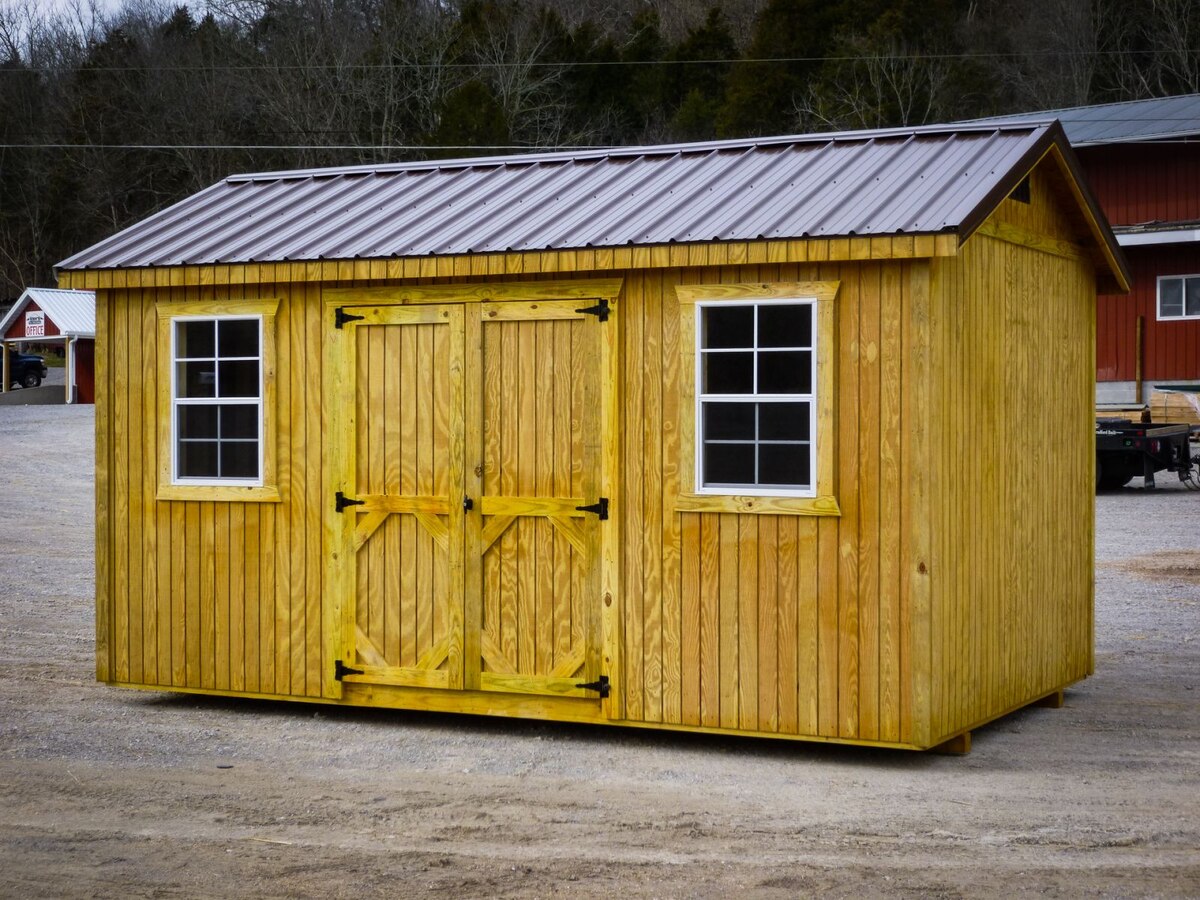

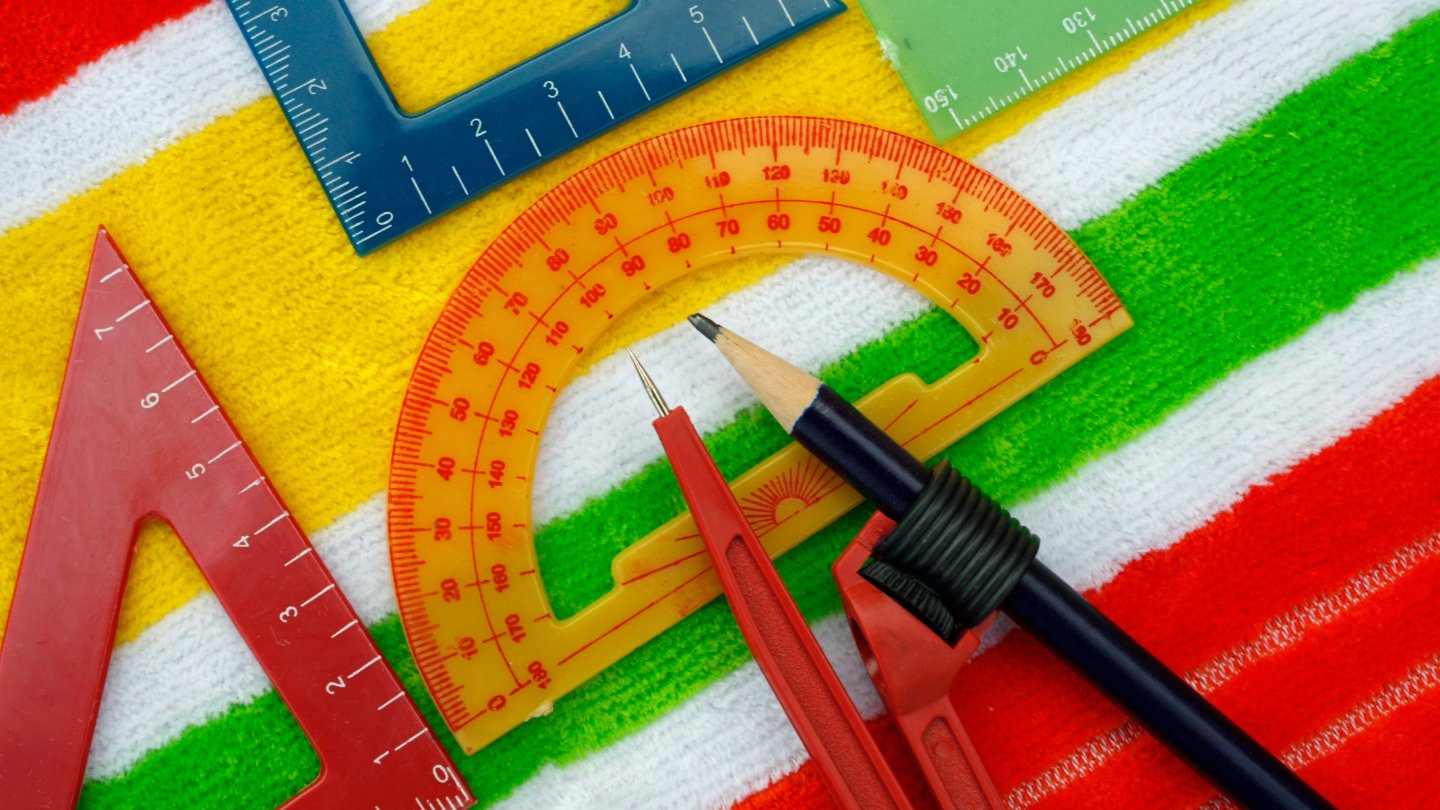
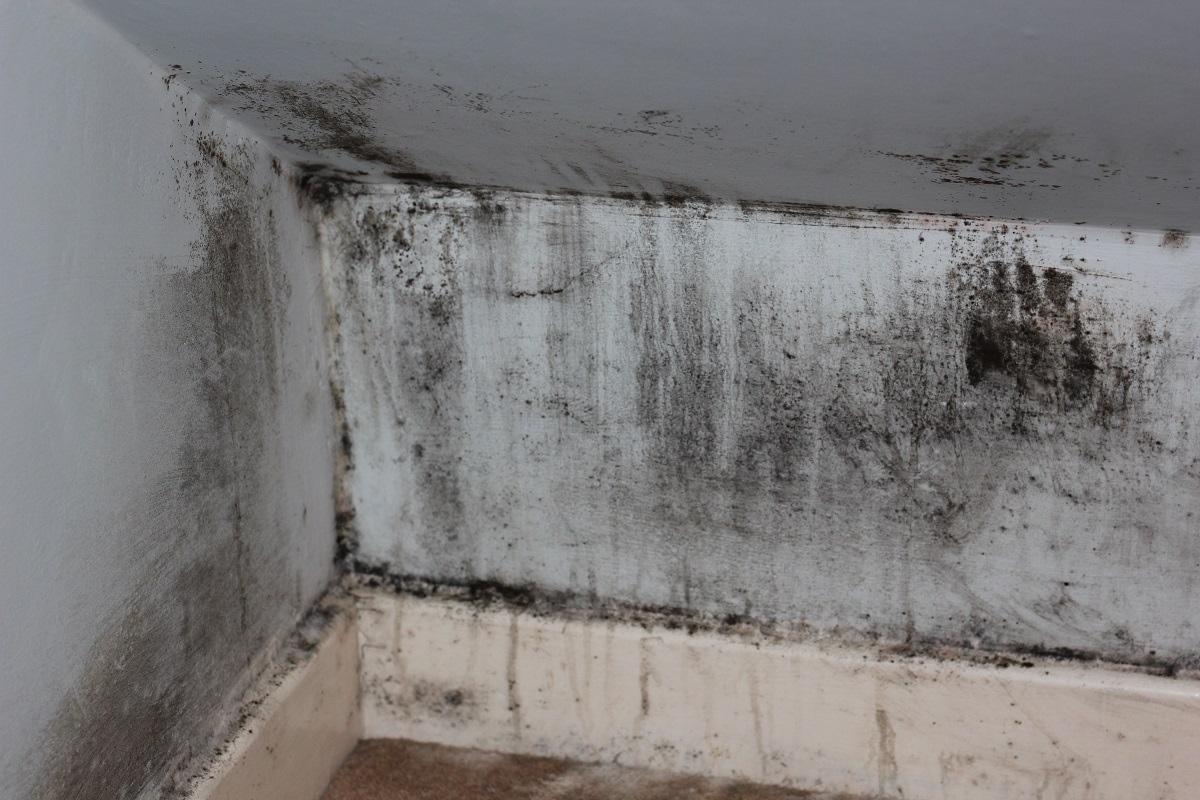




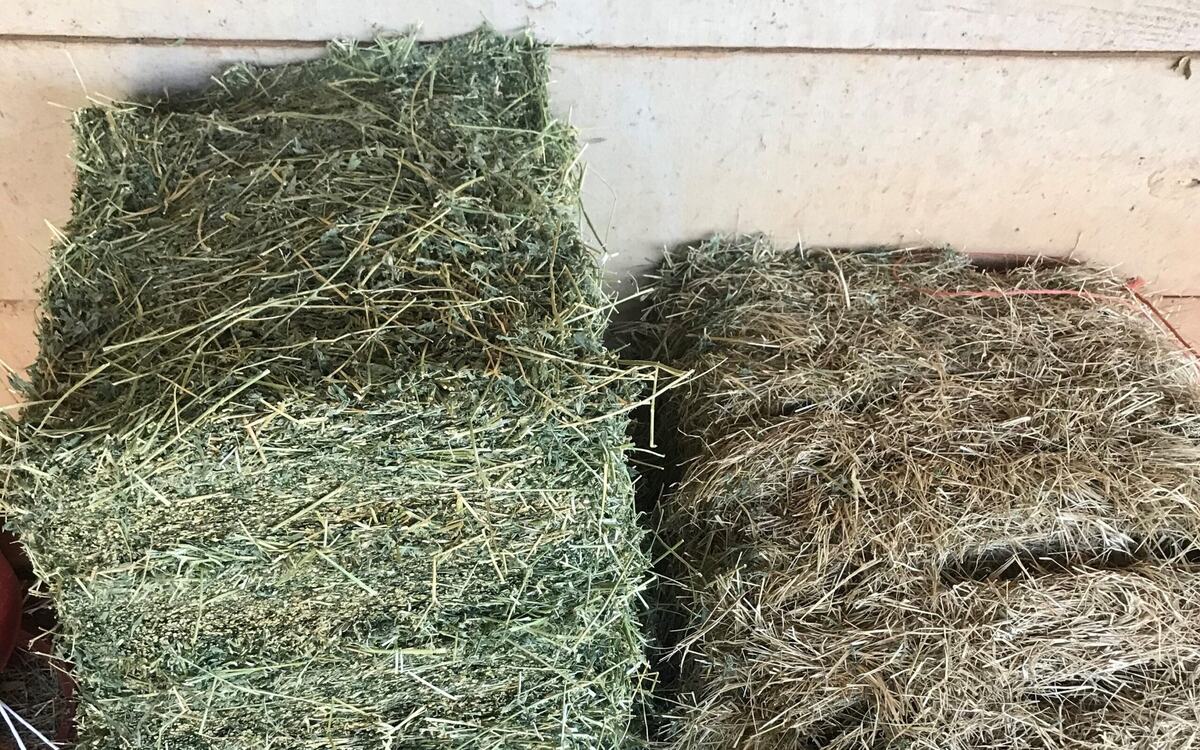

0 thoughts on “What Does A Partially Finished Basement Look Like”